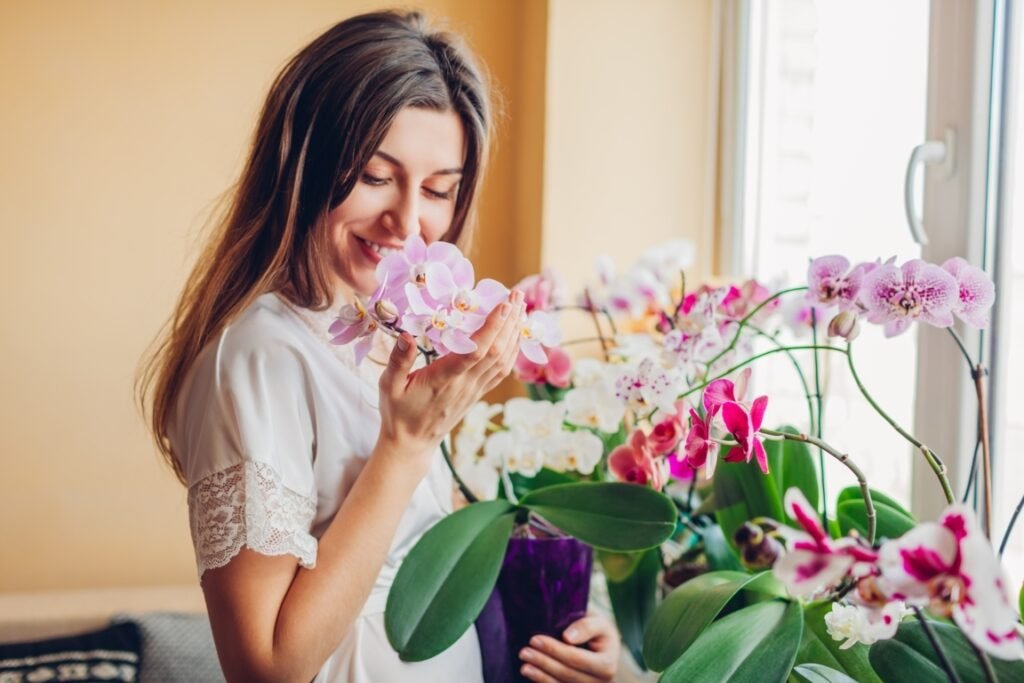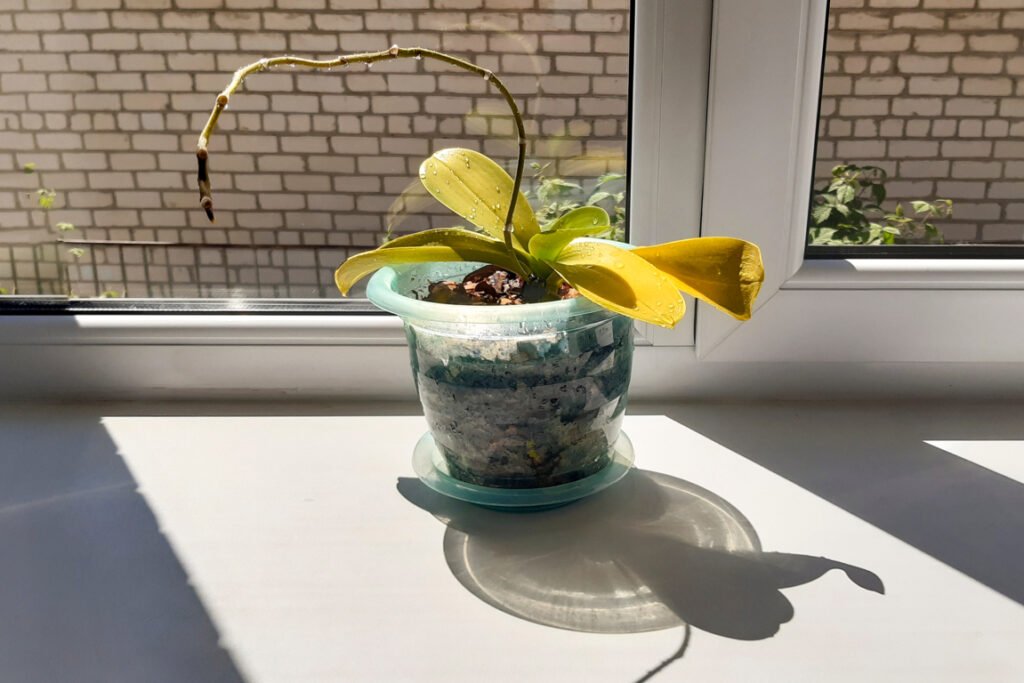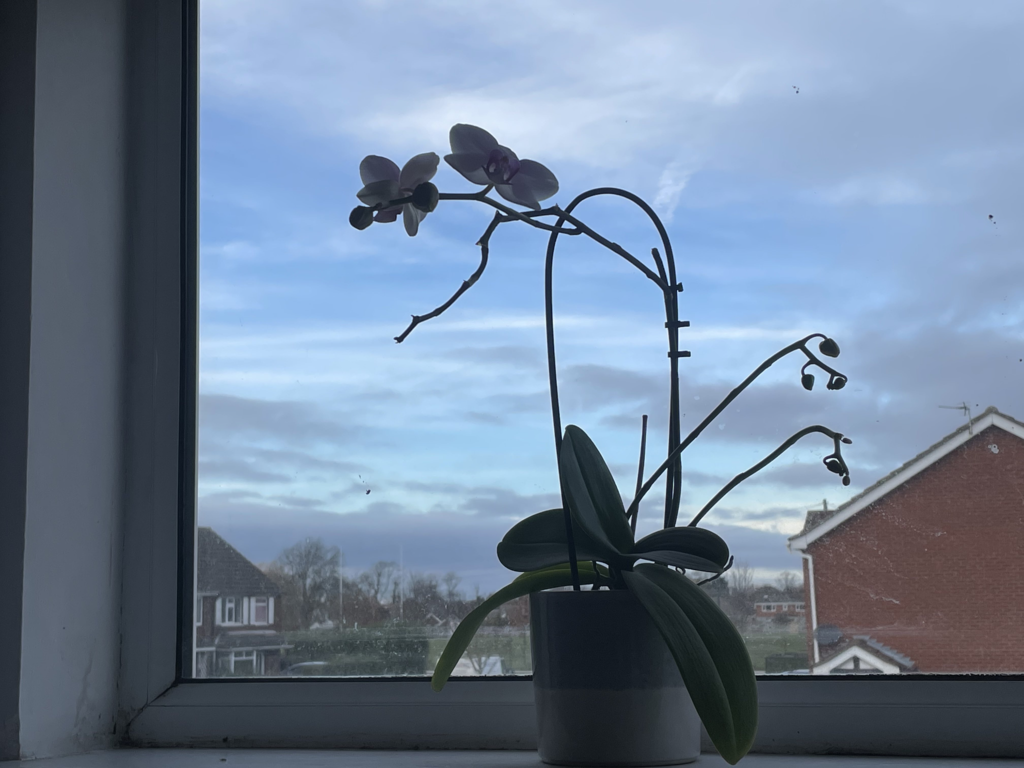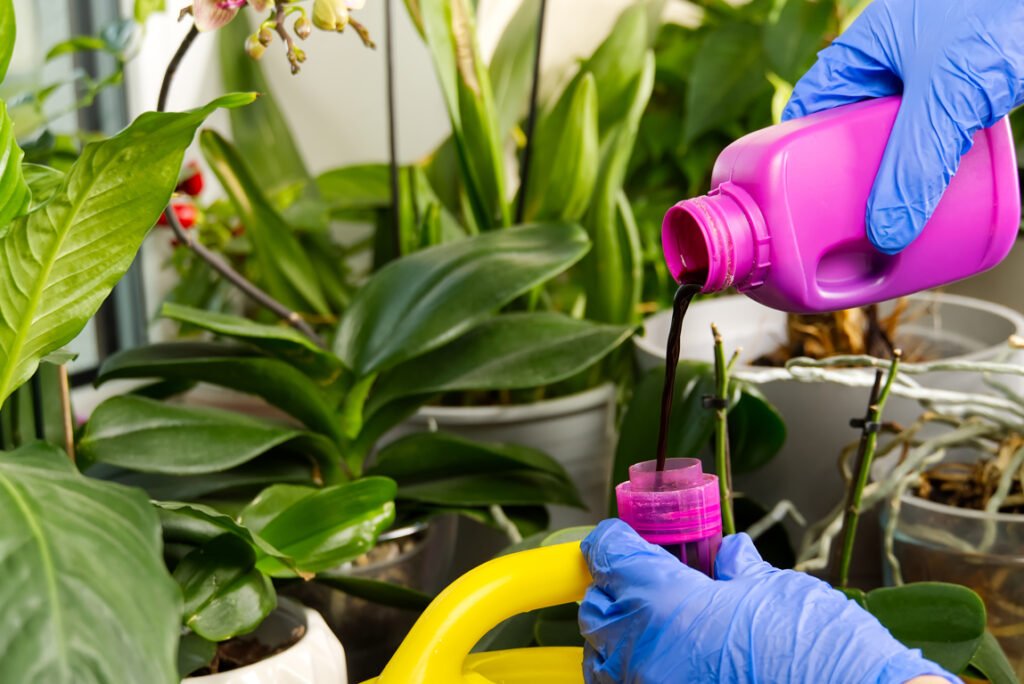It’s never nice to see flowers finally falling from your orchid; however, when they’re pollinated, it’s only a matter of time! Flowers can fall from your orchids for different reasons, such as stress. This can be due to factors such as overwatering, underwatering, too much light or disease. If you’re wondering why are the flowers falling off my orchid – read on!
Orchids can be pretty temperamental plants. They’re not for everyone, and many beginners will likely go through a few before they get the hang of them. Conditions need to be quite specific and mimic the orchid’s native habitat, which is usually tropical forests. However, with some knowledge and practice, they’ll eventually get much easier to keep!
In this article, I’ll discuss the numerous reasons why the flowers might be falling off your orchid and how you can prevent this in the future or nurse your sick orchid back to health. Or, it could simply be that the flowers have lasted long enough!

How Long Do Orchid Flowers Last?
If you’re thinking of giving a flowering orchid to someone as a gift, it can be a great idea! The most common orchid, the Phalaenopsis (Moth), orchid’s flowers can last for around three months, while other orchids, such as Cattleyas, may only last for roughly a month.
Orchid flowers will last a lot longer if you take care of the orchid properly, such as watering it at the right time with the correct amount, feeding it and giving it sufficient light.
How Often Will My Orchid Bloom?
Phalaenopsis orchids can bloom around 2-3 times a year, as they don’t have a set dormancy period. Other species of orchids may spend about 2-6 months in dormancy before they wake and push out growth – so it may be a while before you see any flowers on them. Likely, they’ll produce only one bloom of flowers per year.
Why Are The Flowers Falling Off My Orchid?
Yellow Leaves
If your orchid’s leaves are beginning to turn yellow, there’s likely an underlying problem. Yellowing leaves are a pretty definite answer that something is wrong with your orchid, so assess the care you are giving it. There can be numerous reasons for yellowing leaves, so here are a few:

Underwatering
Many people know that orchids shouldn’t be watered too frequently. Otherwise, this can rot their roots and kill them off. However, this causes many beginners to worry and only water their orchids every 3-4 weeks or not for months! It’s best to water your orchid around once a week, paying attention to the moisture in the soil. I like to stick my finger an inch deep into the soil to check how dry it is – if it’s still soggy, hold off. If it’s dry, though, you should thoroughly water it.
While in bloom, you may find that your orchid will also have an increased water demand. This is universal for every flowering plant, as they’re taking up much more energy to keep those blooms going and produce seeds. Ensure that you address this when assessing the watering needs of your orchid!
Overwatering
It can be hard to find a balance! Overwatering is also a problem many beginners will run into. It would be best if you weren’t watering your orchid every day or multiple times a day, as it’s likely that they won’t need this. Overwatering orchids can lead to various problems, such as yellowing leaves, brown stems, flowers falling off and root rot. Depending on where you water the orchid, it may also lead to crown rot – which can be harder to treat if you don’t have any hydrogen peroxide on hand.
If you’ve noticed brown stems on your orchid, acting as fast as possible is best. You should loosen the orchid out of the pot, careful not to disturb any healthy roots as much as possible. Once your orchid is out of the pot, you should remove any green, brown or black roots that are soft and mushy.
When this is done, leave the orchid out of the pot to let the roots dry out slightly before repotting it again. While waiting, you should sterilize your tools. We don’t want to pass any pathogens to other plants when working on them – so you should always make sure to sterilize your tools before every cut. You can do this with something such as cloth and rubbing alcohol.
After this, you can then repot your orchid into a well-draining, airy mix. This will help with water drainage – orchids should not be kept in heavy mixes that retain lots of water. Their roots can rot quite quickly, so keeping them in a blend that does not retain much water is good.
Insufficient or Too Much Light
While underwatering and overwatering are some of the most common problems beginners run into, not giving an orchid enough light or too much light is a prevalent problem. Finding a position in your house where your orchids will thrive can be hard.
Orchids that receive too much light will start to have yellow discolouration in their leaves. It’s best not to put orchids in direct light. Otherwise, this can stress them out and cause them to drop their flowers. In nature, orchids grow in forests with dense canopies, filtering sunlight and ensuring that it’s not too intense for them.
Preferably, orchids should be kept in a warm, humid place in your house with indirect light. It can be hard to replicate this exactly, but here are some tips to try:
- Humidity Trays – Humidity trays are usually trays of a substrate such as grit which you can apply water too frequently. The water will evaporate, causing the air around the orchid to have a higher level of humidity, which is suitable for the orchid. You can usually find these very cheap in garden centers! Grit might be slightly more expensive, but you could always try a building company.
- Keep Them Away From Windows! – Yes – you can keep orchids on your windowsill. I do this myself, and mine thrive. However, make sure that your orchid doesn’t directly touch the window. Cold windows will shock the orchid as they need a stable temperature, so make sure that they aren’t touching the window when you put them on the windowsill.
- Suitable Positions – While it may be tempting to place an orchid in the front doorway or in your bathroom to show off the flowers to visitors, there are better ideas than this for your orchid. If it doesn’t have sufficient lighting, you will find that the orchids will start to drop their flowers, and their leaves will begin to yellow. It’s best to place them somewhere that receives indirect light for a few hours daily. I keep mine on a north-facing windowsill.

Temperature
No one likes to be too cold or hot, and it’s the same with orchids. In fact, they prefer the same temperatures as us. Anywhere between 12 to 23 degrees is suitable for an orchid. However, I like to keep my orchids slightly in the higher range. It’s always important to remember that orchids come from tropical places with hotter climates! It makes you want to be an orchid, doesn’t it?
Orchids can’t deal with sudden drops in temperature, such as a window being opened or a front door being left open. It’s best to keep them in a room with a stable temperature, away from any windows or doors that you like to open a lot. The leaves will start to yellow, and flowers will drop if they are exposed to this.
Different types of orchids will have other care requirements, especially temperature. Surprisingly, there are hundreds of species of orchids – it’s just that a lot of garden centers don’t typically stock them. Why not do some research and find out which species suits your home the best? After all, there’s no point in buying an orchid which won’t survive in your home.
Overfertilizing
It’s essential that you feed your orchids regularly – this will help them to put out growth and encourage flowering. However, using too much fertilizer will burn the roots of your orchid, or if you use a fertilizer which isn’t designed for orchids.
Fertilizers with very high NPK (Nitrogen, Phosphorous, Potassium) ratios can severely affect your orchid, so it’s always best to go with an orchid-designed feed. Nitrogen drives the growth of the orchid; phosphorous encourages the development of flower buds, and potassium assists in the general transport of water and nutrients around the orchid.

Chemicals in the Air!
No one likes the sound of chemicals in the air. Neither do orchids. Chemicals from sources such as perfume, paint thinner, air fresheners, cigarette smoke and aerosol paint can all have adverse effects on your orchids. It may cause them to drop their flowers or begin to yellow – so it’s essential to keep any sources of these away from your orchid.
So – if you want to smell lovely, it might be worth stepping outside the room with your orchids before spraying that perfume or aftershave! I don’t have this problem, as my orchids are kept in a separate room, which could be a good investment if you plan on going crazy with orchids!
Summary
Orchids. They can be pretty fussy sometimes, but they’re worth your time and effort. Hopefully, from this article, you’ve gained some good insight into the specific conditions orchids need. Remember – it’s always best to do some research into the type of orchid you have or are buying and how people in your country or local area grow them. Many local growers will usually have excellent tips on keeping theirs alive.
If a leaf has dropped off or started to turn yellow, don’t worry! If you have addressed the underlying problem, you should have another leaf growing in the coming months. It’s always a lovely sight to see a new leaf being developed, and who knows – you might get a few more!
Frequently Asked Questions (FAQ)
What should I do if the flowers fall off my orchid?
Don’t panic! Or maybe a bit. It’s always best to address the problem as soon as possible and not leave it for a long time, but chances are that your orchid is definitely treatable. If you notice that the flowers are falling off your orchid, I recommend going through the article and checking off the common causes of flowers falling off. Are you underwatering it? Are you overwatering it? Does it have enough light or too much? It’s always best to work through the problem methodically, ensuring you are correct before starting any treatment. You can either completely remove the flower spike, cut it back to a node, or leave it intact.
Will my orchid flowers grow back after they fall off?
Of course! As long as your orchid is healthy and green, then it’s likely that you’ll be rewarded with another bloom of flowers in a few months or so, depending on the species. Most people own Phalaenopsis orchids which can bloom 2-3 times a year, so you may not be waiting long for the next bloom. If your orchid has developed a flower spike, it’s likely that the flowers will develop on the spike again in a few months. Or, if you want to treat your orchid, you can cut the flower spike back to a node, promoting lush and dense foliage. This will help the overall health of your orchid, so I recommend doing this every few blooms.
When will my orchid bloom?
Blooms can occur at different times depending on the species of the orchid. Phalaenopsis orchids, they like to bloom from late winter to spring. The blooms can last 2-3 months, given good care. Late June and July are usually when Phalaenopsis orchids start to lose their flowers, so don’t be worried if your flowers fall off then – unless the leaves are yellowing. While your orchid isn’t flowering, it might be worth repotting it! If your orchid seems like it’s got too big for its pot, or the soil has been the same for years, then it’s always good to give it a new, bigger pot. Make sure to use an airy and well-draining soil for your orchids, as they don’t like to be kept in heavy mixes such as compost.
How can I tell if my orchid is underwatered?
Underwatering is a pretty easy cause to diagnose. The leaves will likely start to yellow, or the stems will begin to turn brown. The roots may also become a whitish color, indicating that they aren’t receiving enough water. If you believe that you have underwatered your orchid, you should thoroughly water it as soon as possible. I like to submerge the orchid for a bit if they are underwatered.



